Von der Decken's hornbill facts for kids
Quick facts for kids Von der Decken's hornbill |
|
|---|---|
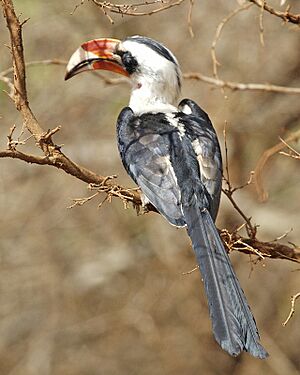 |
|
| Male | |
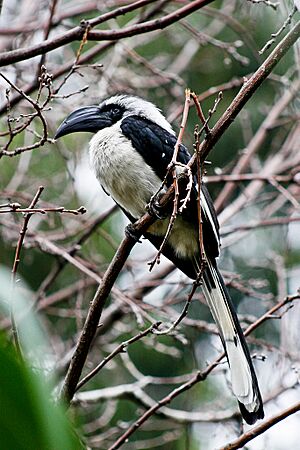 |
|
| Female | |
| Conservation status | |
| Scientific classification | |
| Genus: |
Tockus
|
| Species: |
deckeni
|
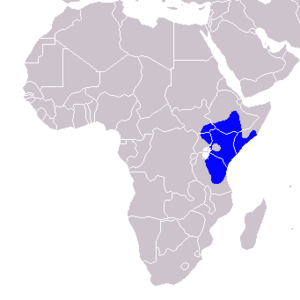 |
|
| Distribution of Von der Decken's hornbill (NOTE: Includes range of Jackson's hornbill) | |
The Von der Decken's hornbill (Tockus deckeni) is a cool bird found in East Africa. You can spot them mostly east of the East African Rift, from Ethiopia all the way south to Tanzania. They love living in dry, thorny areas. Another bird, Jackson's hornbill, is sometimes thought to be a type of Von der Decken's hornbill. This bird was named after a German explorer, Baron Karl Klaus von der Decken, who lived from 1833 to 1865.
Contents
What Does It Look Like?
This hornbill is a small bird. It has blackish feathers on its back and mostly white feathers on its belly and head. It has a long tail and a long, curved beak. Unlike some other hornbills, it does not have a large growth (called a casque) on top of its beak.
It looks a lot like the red-billed hornbill. The main differences are the color of its beak and that it doesn't have spots on its wing feathers.
Male vs. Female Hornbills
Male and female Von der Decken's hornbills look different, which is called sexual dimorphism. The female has a black beak. The male, however, has a bright red beak with a creamy white tip and a black edge.
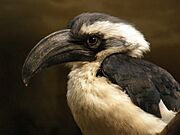 |
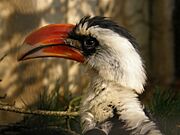 |
|
|
|
How Do They Raise Their Young?
When it's time to have babies, the female hornbill lays two or three white eggs inside a hole in a tree. She then seals herself inside the hole using a special "cement." This cement is made from mud, her droppings, and fruit pulp.
There's only a tiny opening left, just big enough for the male to pass food to her and the chicks. This keeps the family safe inside the nest.
When the chicks and the mother get too big for the nest, the mother breaks out. She then helps rebuild the wall of the nest. After that, both parents work together to feed their growing chicks.
What Do They Eat?
Von der Decken's hornbills are omnivores. This means they eat both plants and animals. Their diet includes insects, fruits, and seeds. They mostly find their food on the ground.
Outside of the breeding season, these birds often gather in groups. If they are kept in zoos, they enjoy eating fruits like papaya, cantaloupe, blueberries, bananas, and apples. They also need live food every day, such as crickets and mealworms. Sometimes, they can even eat small rodents, but only a few times a week.



